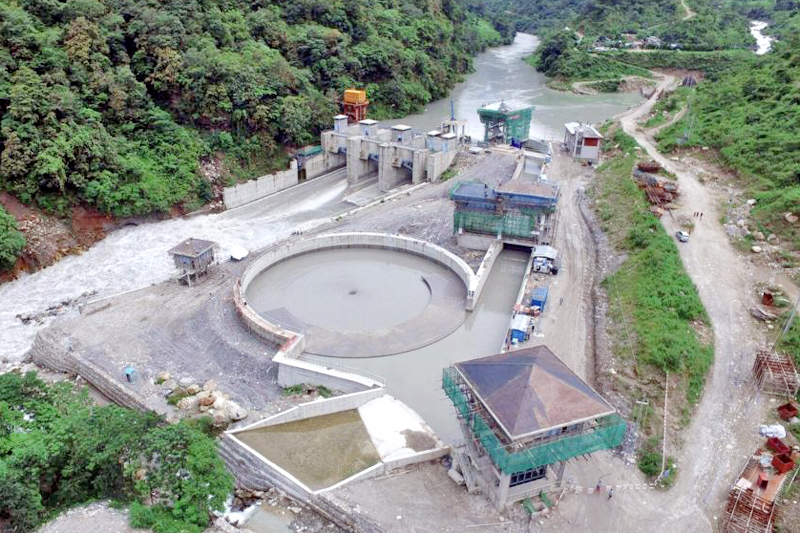Power sector reform gains credibility with tangible outputs
Kathmandu, March 1
The private sector players involved in hydropower development have said that the government’s move to reform the country’s power sector has gained momentum with tangible outputs and it has created a positive vibe for power sector development.
“The government’s commitment to reform the power sector had always been inconsistent,” said Khadga Bahadur Bisht, immediate past president of Independent Power Producers’ Association - Nepal (IPPAN). “However, of late the Ministry of Energy (MoE) and Nepal Electricity Authority (NEA) have been seriously implementing the latest strategic document called ‘National Energy Crisis Prevention and Electricity Development Decade’,” he stated, adding it has not only started delivering results but also improved credibility of government for power sector reform.
As the government had never been serious in implementing the previous strategic documents for power sector development and reform, stakeholders and investors had not taken the government’s recent strategic vision document seriously. Since 2001, there have been five strategic documents — one every three years on average.
The government had adopted ‘Water Resource Strategy’ in 2001 and revised it in 2005. Likewise, in 2007 the government had issued a plan calling for generation of 10,000 megawatts (MW) of electricity in 10 years, which was again revised in 2009 with a plan to produce 25,000 MW of electricity in 10 years. However, both policies were not implemented seriously.
In the aftermath of trade disruptions that acutely affected import of petroleum products, the government came out with another revamped plan, that is the National Energy Crisis Prevention and Electricity Development Decade, which envisioned developing 10,000 MW of power in 10 years. For a change, implementation of this particular vision document has gathered pace and brought new vibes, as per private sector developers.
The government’s initiative to reform the power sector like ending load shedding, expediting development of critical infrastructure like transmission line, setting up various utilities, process simplification for ongoing hydel projects, initiative to enhance distribution system and control leakage has encouraged private sector developers and also lured foreign investors.
“The MoE and NEA have been serious in implementing the recent strategic document that also provides security of investment and ensures returns to foreign investors through power purchase agreement (PPA) in dollar terms till the payback period of the loan obtained by the foreign developers,” said Bisht. He added that this has paved the way for foreign investors to invest in Nepal’s hydropower sector. “We will be able to see a paradigm shift in the power sector once the MoE’s recommendation on PPA in dollar terms and new PPA rates for reservoir projects and peaking run of the river projects come into force.” One major development in the energy sector also has been the implementation of the ‘take or pay’ provision in PPA, he added.
The government has envisaged discouraging run of the river projects due to low generation of the rated capacity during dry season and has proposed new PPA rates for reservoir and peaking run of the river projects. The recent document issued by the government last year to develop 10,000 MW in 10 years has envisioned raising the contribution of reservoir projects to 40-50 per cent, peaking run of the river (15 to 20 per cent), run of the river (25 to 30 per cent) and alternative energy (five to 10 per cent).
Addressing a programme organised by Water Resource and Energy Journalists Nepal in Kathmandu today to review the progress of the latest plan issued last year on February 18, Minister for Energy Janardan Sharma, said that the government is fully committed to translate the development aspirations of the people through action and that energy is the basic need to kickstart development.
Minister Sharma informed that the government has prioritised to develop 750 kV East-West transmission line and to also build a 400 kV transmission line connecting the East-West transmission line to the river basins. Along with robust infrastructure development, the government has also envisioned to seek public investment as equity in hydro projects developed by the government or NEA to uplift their living standards. This initiative has been started through 440MW Tila-Karnali Hydropower Project and each household from the remote Karnali zone will have share of Rs 100,000 in the project, he said.
Sharma further added the government will do its best to develop country’s hydroelectric potential from perspective of energy security. He also stated that per capita energy consumption also needs to be increased from current 136 units to 1,000 units to utilise power that will be generated in the country in future.






